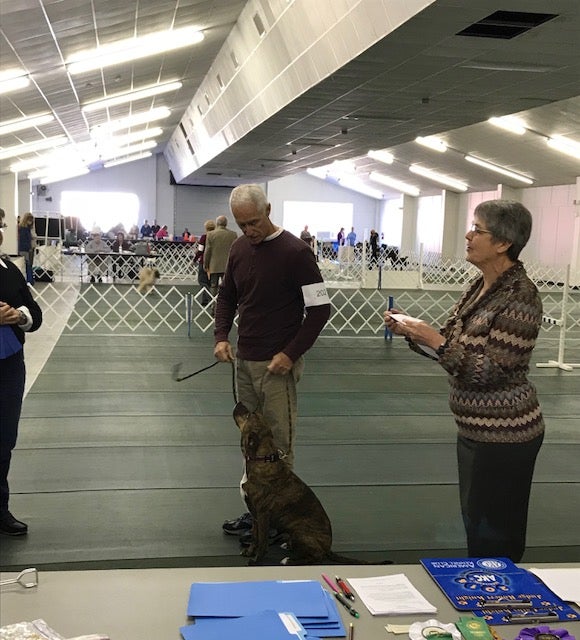
Building a Bond for Training Success
This issue’s training tip is from John Outland, who lives in Tallahassee, Florida, with 10-year old Outland’s Brooklyn UD BN CGCA TKN. Brooklyn spent most of the first two years of her life on the streets.She became John’s dog when his daughter, who had taken in Brooklyn after her homeless owner left town, moved out.
John, who retired in 2011, had never trained a dog before. Fast forward several years and the pair placed fourth in the Utility division at the 2019 AKC Obedience Classic in Orlando, Florida. Their goal is to complete the UDX title; they need just three more legs. They have also been invited to the 2020 National Obedience Championship.
John shares with us how positive reinforcement, practice, and keeping things fun for your dog helps to build a bond that makes training rewarding.
Brooklyn, an All-American Dog, finished in fourth place in Utility at the 2019 AKC Obedience Classic. How did we get there? It has taken seven years from not knowing anything about dogs or dog training to having success in such an event.
Dog training was foreign to me when Brooklyn came into my life. Fortunately, we were able to join an obedience working group and the Tallahassee Dog Obedience Club. Learning from kind and friendly people willing to share their expertise was invaluable. Brooklyn, even though new to the group, was a quick learner: A very soft dog that wants to please.
The clubs’ trainers have more than 40 years each of training handlers and dogs. If you haven’t figured it out yet, the training is just as much or more about training the handler as it is the dog. You must learn how to handle a dog properly if you want to be successful. They encouraged me to stick with it even though neither club probably thought we would.

Learning to heel was new to Brooklyn but with patience, positive reinforcement, encouraging words, lots of treats, and staying engaged we improved. I talked to Brooklyn constantly at the beginning, and she was happy to be making good decisions. Your dog needs to know that you are there for them, and that trust evolves into a partnership. Never use harsh words or a negative tone as you will set your training back significantly. Say “Oh no, let’s try this again,” but with a positive, high-pitch voice tone. The high-pitch tone was hard for me, but you need to learn it.
Keeping your dog engaged between exercises is essential. Do not leave your dog lagging behind. Engage your dog as you both move to the next exercise. It is important to do this regardless of whether you did well, failed or did poorly on an exercise. There is always another opportunity to succeed.
Dog training takes a lot of work, repetition, positive reinforcement and going to different places to train. It’s all about building a bond, trust and confidence in each other. You need to reinforce the strong bond at every opportunity. Then both of you will discover how rewarding it is to work as a team moving up the obedience ladder.

